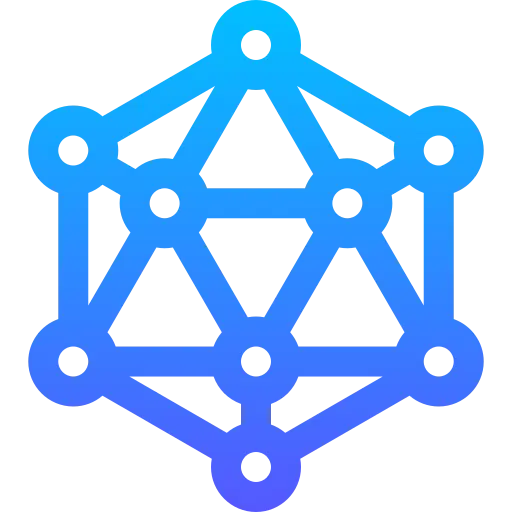Digital gaming is changing fast. Players no longer just play games — they now own digital assets that can be traded, sold, or used across platforms. This new system of digital ownership is possible because of blockchain technology and Web3 infrastructure. One project leading this change is Line Protocol, and its token $LINE is becoming a powerful tool in the gaming economy.
What is Digital Ownership in Gaming?
In traditional gaming, when you buy a weapon, skin, or item, you do not actually own it. The game company controls everything. If the servers go down or your account is banned, you lose everything.
But in Web3 gaming, ownership is real. Thanks to blockchain, players can hold digital assets like NFTs in their own wallets. These items can be sold, traded, or moved across different games.
Problems with Traditional Game Economies
Traditional games have many issues:
- No true ownership: You cannot take your assets outside the game.
- Centralised control: Game developers decide what happens to your purchases.
- Limited earning: Players spend money but rarely earn anything back.
- No cross-game use: Assets cannot be used across different games or platforms.
The Rise of Web3 and GameFi
GameFi (Gaming + DeFi) brings financial systems into gaming. With GameFi, players earn rewards in the form of tokens and NFTs. This system supports play-to-earn models where time and skill can convert into real income.
According to DappRadar, GameFi is growing rapidly and is expected to shape the future of the gaming industry.
How $LINE Powers the Gaming Economy
Line Protocol introduces $LINE as the core utility token for its gaming ecosystem. Here’s how $LINE is changing the gaming economy:
1. Earn Through Gameplay
Players can earn $LINE by completing missions, winning matches, or participating in events. This makes gaming more rewarding.
2. Craft and Trade NFTs
Players can use $LINE to craft, upgrade, or trade in-game NFTs like skins, weapons, or special items. These items have real-world value and can be sold on marketplaces.
3. Governance Power
By staking $LINE, players can vote on protocol decisions like feature updates or community proposals. This gives players more control and voice.
4. Unlock Exclusive Game Content
Special content like maps, seasonal passes, or campaigns can be unlocked using $LINE. This adds more utility to the token and value to the game experience.
Why Line Protocol is Different
Many projects try to support gaming, but Line Protocol was designed specifically for Web3 games and DeFi. Here’s what makes it stand out:
- Modular Architecture: Developers can build only the parts they need.
- Unity and Unreal Engine Support: Easy integration with top game engines.
- Fast Transactions with Low Fees: Ideal for games that need real-time speed.
- Cross-Chain Support: Players and assets can move across multiple blockchains.
These features make it easier for game developers to build immersive, scalable experiences — and for gamers to enjoy seamless gameplay with real ownership.
Real-Life Use Cases and What to Expect
Developers can use Line Protocol’s SDKs to launch RPGs, PvP battle arenas, or open-world games that support NFTs and in-game economies.
Players can build inventory across games, trade items on-chain, and earn real income through active play.
In the future, expect to see large studios, esports platforms, and indie developers all using Line Protocol to power digital worlds with real ownership and cross-game economies.
Conclusion
The world of gaming is evolving, and digital ownership is at the heart of this transformation. With the help of blockchain, gamers now have control over their in-game assets — and $LINE is the token making this possible.
By combining fast infrastructure, low fees, and strong developer tools, Line Protocol is building the future of Web3 gaming.
If you are a developer, builder, or gamer, now is the time to explore Line Protocol and take part in the future of digital ownership.
Visit the official website: https://lineprotocol.io
FAQs: The Future of Digital Ownership: How $LINE Powers the Gaming Economy
1. What is digital ownership in gaming?
Digital ownership means players can truly own, trade, or sell their in-game items, usually through NFTs stored on the blockchain.
2. How do I earn $LINE tokens?
You can earn $LINE by playing games built on Line Protocol — completing missions, winning battles, or progressing in campaigns.
3. Can I use $LINE across different games?
Yes. Line Protocol supports cross-game and cross-chain compatibility, so $LINE can be used across supported ecosystems.
4. What makes Line Protocol different from other blockchains?
Line Protocol is built specifically for DeFi and gaming. It supports fast, low-cost transactions, modular tools, and native Unity/Unreal integration.
5. Is Line Protocol suitable for game developers?
Absolutely. It offers developer-friendly SDKs, support for game engines, and a modular system to make building GameFi dApps easy.

